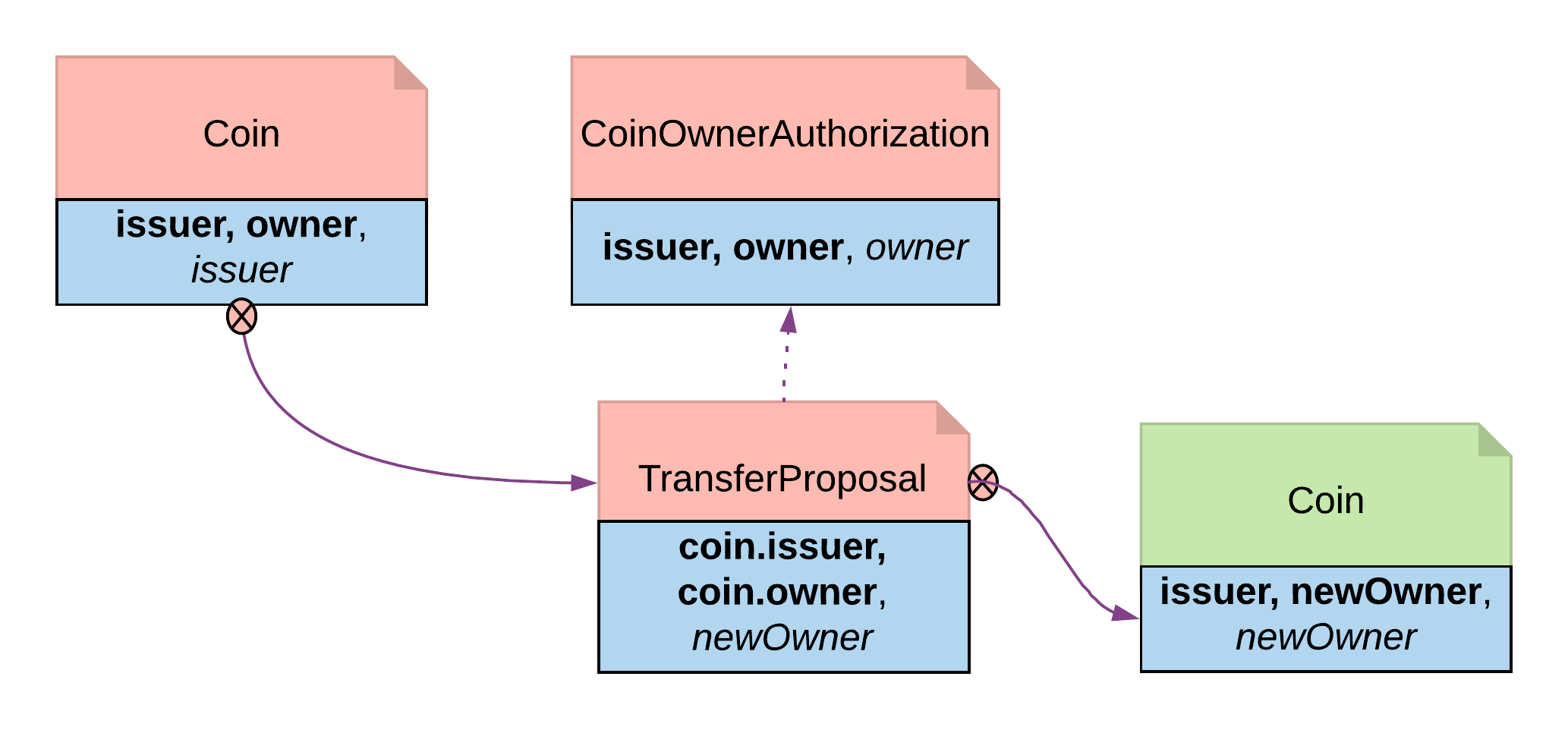The Authorization Pattern¶
The Authorization pattern demonstrates how to make sure a controlling party is authorized before they take certain actions.
Motivation¶
Authorization is an universal concept in the business world as access to most business resources is a privilege, and not given freely. For example, security trading may seem to be a plain bilateral agreement between the two trading counterparties, but this could not be further from truth. To be able to trade, the trading parties need go through a series of authorization processes and gain permission from a list of service providers such as exchanges, market data streaming services, clearing houses and security registrars etc.
The Authorization pattern shows how to model these authorization checks prior to a business transaction.
Authorization¶
Here is an implementation of a Coin transfer without any authorization:
template Coin
with
owner: Party
issuer: Party
amount: Decimal
delegates : [Party]
where
signatory issuer, owner
observer delegates
--a coin can only be archived by the issuer under the condition that the issuer is the owner of the coin. This ensures the issuer cannot archive coins at will.
choice Archives
: ()
controller issuer
do assert (issuer == owner)
This is may be insufficient since the issuer has no means to ensure the newOwner is an accredited company. The following changes fix this deficiency.
- Authorization contract
The below shows an authorization contract CoinOwnerAuthorization. In this example, the issuer is the only signatory so it can be easily created on the ledger. Owner is an observer on the contract to ensure they can see and use the authorization.
template CoinOwnerAuthorization with owner: Party issuer: Party where signatory issuer observer owner choice WithdrawAuthorization : () controller issuer do return ()
Authorization contracts can have much more advanced business logic, but in its simplest form, CoinOwnerAuthorization serves its main purpose, which is to prove the owner is a warranted coin owner.
- TransferProposal contract
In the TransferProposal contract, the Accept choice checks that newOwner has proper authorization. A CoinOwnerAuthorization for the new owner has to be supplied and is checked by the two assert statements in the choice before a coin can be transferred.
choice AcceptTransfer : ContractId Coin with token: ContractId CoinOwnerAuthorization controller newOwner do t <- fetch token assert (coin.issuer == t.issuer) assert (newOwner == t.owner) create coin with owner = newOwner

Authorization Diagram¶

